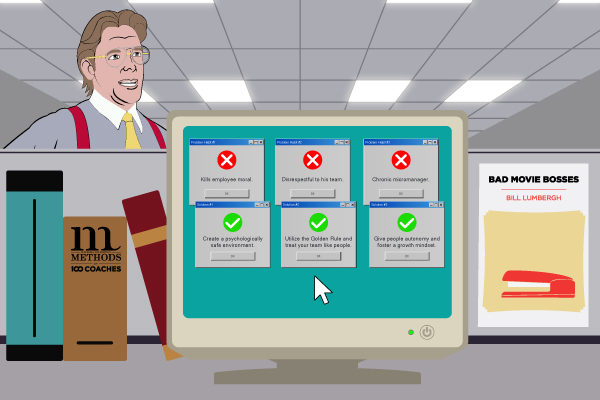Unless you’re in the restaurant industry, counting the number of tables you serve in a shift, high turnover is typically not something you want to strive for in the workplace. In most organizations, the ideal employee probably looks like someone who not only does great work, but fits in with the culture, and genuinely enjoys their position at the company and thus feels fulfilled. This magical unicorn employee never complains, never has any issues, and will never leave the company. While this version of the ideal employee might have existed in your parents’ and grandparents’ time, the idea of a one-company-career has since lost a lot of steam.
Most younger employees now are asking the question “what can this job do for me?” rather than the other way around. Perhaps this is because employees, with the proliferation of services like Indeed.com and LinkedIn jobs, are at no deficit for seeing what else is out there at any given time; perhaps this is because the younger generation workforce isn’t willing to settle, and wants better for themselves; perhaps this is because jobs are becoming more and more specific and niche-oriented. Data shows job seekers are certainly being more selective and looking for features like remote work that allow their job to better fit their overall lifestyle. Burnout has been another driving force in the recent increase in turnover rates. Whatever the case, it’s not likely that the culture of the younger workforce will be changing their ways, so it’s best for companies to start understanding how they can better retain their talent.

Ultimately, this starts with paying people fair and livable wages. Consider the cost of living, how much it costs to raise children and send them to school, and the price of transportation. These are just the bare minimum expenses most people have to budget for, and if you thrive when you have extra to spend on a vacation or other luxuries, it’s safe to say your employees will, too. If your team is overworked and underpaid, leaving them with little time and money to live their lives outside of work or care for their families, no amount of additional perks or personal alignment with your mission will overcome this hurdle of pay and workload balance. Besides, higher wages have been shown to lead to more effective and more satisfied workers. Once you have established reasonable compensation rates, here are some ways you can take your employee retention strategy to the next level:

1. One of the most obvious (and difficult to get right) aspects of talent retention is hiring the right people in the first place. Finding the right fit both culturally and skill-wise can be the toughest part of recruiting. People often show us their best selves in interviews, and often it isn’t until much later that the person starts to let their guard down, revealing who they “really are.” Sometimes this turns out just fine, other times it can be disastrous and cost time and money to replace a new hire. When done right, though, talent will stay with your company as long as it continues to be a great fit. Try auditing your hiring and interview processes to see where you might improve the section process; add questions about the company’s culture; ask prospective hires about their future desires; make it clear that you’re looking for and ready to invest in a long-term fit, and not just a career-climber.
2. The second, and similarly obvious, aspect is career advancement opportunities. These can come in the form of salary increases, promotions, or ascending to an executive or management position. If you tell a prospective hire “there are definite avenues for advancement, and in X years you could find yourself in X higher up position,” they’ll immediately see your company as a place where they can grow, and where their career aspirations can be fruitfully nurtured. If a prospective employee senses that once they’re established, their career will stagnate, chances are they won’t feel a very strong loyalty to your company or organization. Understanding that no one likely wants to “stand still” in their career can be key in ensuring you make new or prospective hires aware of career advancement opportunities.

3. Similar to #2, another way to show your staff you’re invested in them long-term is to provide continuing education and training opportunities to all employees, free of charge. These could be online courses, facilitated workshops, or even virtual or in-person conferences. By offering free training and education opportunities, you’re signaling to your employees that you care about their growth and want them to have a chance to increase their skills, both for the better of the company and themselves. If your employees don’t jump at this chance to freely improve, first consider if the selected training is relevant, then look back at #1 and ask if you’ve hired someone who is a right fit. You want everyone on your team to constantly be aiming for improvement, and providing these kinds of learning opportunities, and giving people the time and space to do them, can help you achieve that. There are plenty of online resources to do this with, such as our very own Methods of 100 Coaches system, which provides comprehensive, all-in-one leadership training solutions for organizations of any shape or size.

4. Offer employment perks. This one may seem superfluous, but the perks that employees receive as a benefit of working for your company can have a serious impact on talent retention. Are you a company that oversees multiple restaurant franchises? Give out free weekly meal vouchers for your teammates to eat at one of your restaurants. Are you a mostly remote team? Offer practical benefits such as stipends for home office equipment, desks, chairs, computers, and other tools needed to do the job. Try scheduling morale-boosting activities like virtual happy hours or playing online games like Skribbl. You can even offer wellness perks, including paid memberships to gyms or mental health apps, extended time-off, or family leave. The options here are truly endless, and don’t be afraid to get creative! Perks are supposed to be fun and useful, and if done right, they can help keep top talent engaged and passionate about working for your organization.
5. Instate a rewards and recognition system. If you’re a sales organization, you probably already award some sort of special recognition to your top sellers. If you’re not used to incentivizing work like this, try it in small ways for your company. Offer a small one-time bonus for those who hit a certain mark, or offer an accumulation of vacation time for hitting deadlines. Pick something that works for your organization and fits your culture. Be careful here not to incite jealousy or too much of a competitive spirit between your team members; you don’t want the rewards to be so big or unfair that it causes uneasiness amongst your team. Before implementing a new rewards system, ask your team for their perspective and feedback on how you can make it as equitable as possible.

6. Allow flexible work arrangements. COVID-19 rocked the business world (and the world at large) by forcing companies to rapidly adopt remote work policies, and the result for many employees was that they found they actually preferred it to traditional co-located work in a central office. While this may not work for everyone, and remote work may not be appropriate for every company, offering flexibility in this regard can help entice (especially younger) employees to want to stay at the job longer. Now that so many companies have adopted remote work head-on, retaining top talent means realizing that if a person wants to work from home, they can easily find a job that will allow that—if you’re not. Don’t get left behind in the old notions of what “work” looks like, and see how this improved freedom for employees can actually keep your best people at your company, and make them happier to work for you, too. Methods coach David Burkus has an excellent course on leveraging the power of remote work to create a happier and higher-functioning team.
Things are changing faster than ever in business, and this means that talent is also coming and going at unprecedented rates. While nothing can stop an employee from leaving — especially if they are changing industries, or got a job offer paying exorbitantly more than what you pay them, or are just unable to work with their current manager due to interpersonal conflict — the above steps can help you retain top talent. It starts with hiring right, but more than that, it continues with conscious action and planning.
Nothing breeds loyalty and personal investment from employees faster than showing them that you are interested in investing in them, their well-being, and their professional success. Doing right by your employees shows them that your company is a place where they can thrive and grow into the future. No one likes to hear the word “turnover” in business unless they’re free pastries at the quarterly sales meeting, so try out some of these strategies to help retain talent.
If you want to learn step-by-step time management and productivity skills we recommend investing in yourself and your team with a Methods of 100 Coaches membership.





